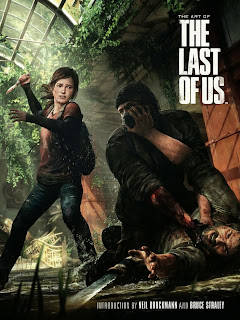To work on visual composition is to plan what eventually
will become 3rd dimension and even 4th. In order to nail
the feel and style of an environment, character etc. There needs to be a full
understanding of the fundamentals that can be learned from the great classical
artists. Things like understanding 3D form and lighting, using these to create
a feel, a mood, to visually communicate your ideas. These are all required when
creating these fundamental attributes in game design.
These images are works from the game The Last of Us. As you
can tell I am quite a big fan of this game. I feel it symbolises everything that
I feel makes a great, engaging game. Every detail is perfect in my opinion. For
example all of these landscape concepts depict the mood and feel for that particular environment. The fundamentals are
down. Use of perspective to enhance the 3D readability of the image. As well as
clever lighting and layout, every single one of these images is immersive. They
all stick to a very organic colour pallet with muted colours that tied in with
all the other technical choices made for the imagery. Having seen and
experienced the final outcome, they really stayed true to the images and style
that they created in the early stages of of design.
This stretches through to the character development,
including the monsters and enemies in the game. They followed the same
believable and realistically possible structure that the environments had.
Countless variations and different ideas are put into characters. Once a final
design is decided, an illustration of the characters needs to be done in order to
show their personality. Again they need to be readable just from just one image
as well as a series of images.
To place the characters within an environment composition
also shows how characters and environments tie together, to show an all-round immersive
feel to the imagery. It gives us a chance to understand the human impact within
the surroundings that have been created.
I feel that simplicity is key when coming up with the visual
compositions. Over complicating an image can cloud the original message within
the scene, and how people read it and interpret it. Using the great classical
elements that made the great masters artworks, can enhance the impact of games
concepts and design on the viewer. It is becoming an art form within itself.
The games industry is becoming a lot more art conscious and is hiring and
requiring more and more technically exceptional artists to produce their design
and concepts work.
I stumbled across this article written by the film critic
Roger Elbert, entitled ‘Video Games Can Never Be Art’ http://www.rogerebert.com/rogers-journal/video-games-can-never-be-art
This article was written on April 16th, 2010. Robert Elbert passed
away on the 4th of April 2013 at the age of 70. He stated that Video
games would never be art in the lifetime of anyone who has a current interest
in them. But this is coming from a man of 67 who has seen a lot of new
technological advances, but believes in the stigma that games cannot be art. I
feel that The Last Of Us challenges his words. I feel it matches with other
forms of art of storytelling but in such an advanced way.
If people could see
games for what they are now and are fast becoming, without the stigma they’ve
seemed to have gained over the years, I’m sure many would question their own
opinions. So many art forms are taken into consideration with modern games,
from visual style to the music used. I feel they are on a fast track to
becoming a controversial art form, that I personally love and these are
elements that I always look for within a game.










.jpg)





.jpg)




+concept+sheet.jpg)
